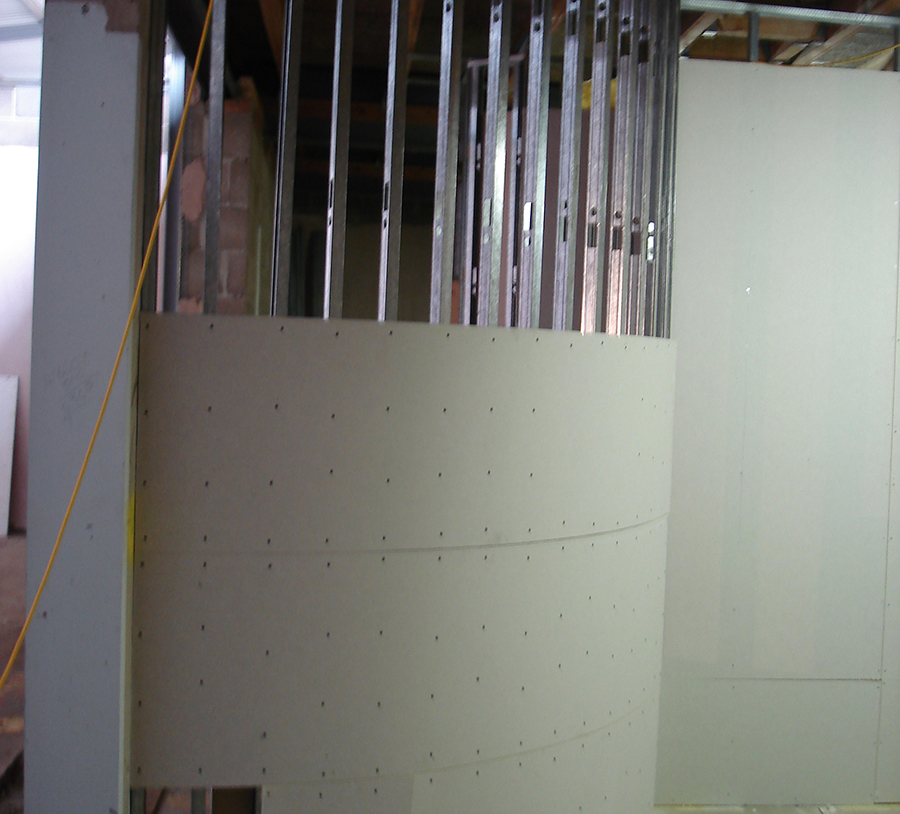Drylining: Explained
We've all seen adverts for drylining contractors, but how many of us know what they actually do? What does drylining mean, and how and where is it used? The truth is, drylining is something that any business with commercial premises can benefit from.
Here at R & B Plastering, our knowledge and experience has been gained from a range of projects over many years. We're experts when it comes to plastering, drylining, floor screeding and rendering. It's our mission to share that experience with our customers, providing them with the best possible service and workmanship. So if you want to know about drylining, we're probably the best people to explain it.
What exactly is drylining?
Put simply, the term drylining means fixing plasterboard to walls or ceilings to create a level finish. It is important to note that plasterboard requires either a skim plaster or a tape & joint finish where the joints between the boards are then filled and sanded back to provide a smooth, paintable surface once the plaster has dried. However, different types of walls require different techniques.
Stone or brick walls
Where brick, breeze block or stone walls need to be resurfaced, drylining is a quick and efficient option. Drylining contractors will apply dabs of a plaster and adhesive mix to essentially stick the plasterboard to the wall. Boards with insulation on the back can be used if required.
Timber stud walls
Plasterboard is fixed to timber frame walls using plasterboard nails or screws. The only difference to normal partition walls is that no plastering is required afterwards.
The benefits of drylining
Uneven walls are commonly given a coat of cement, followed by wet plaster and a skim coat to finish. However, this process can be labour-intensive, time-consuming and costly. Drylining contractors can offer an alternative that's equally effective, but quicker and cheaper.
Drylining also allows for insulation to be included where necessary. And because there's no waiting for plaster to dry, it means less disturbance for commercial premises. In short, drylining allows businesses to reconfigure their workspace with only minimum disruption for employees.
Projects suitable for drylining
Renovated premises
Many older buildings repurposed for business have benefited from drylining. Rough stone and unusual features can be a problem, but drylining offers a fast and cost-effective solution. Using timber or metal frames, even curved walls can be given a smooth, paint-ready finish. A timber frame, insulated and drylined, will also eliminate condensation on the inside of an exterior wall.
Making the most of your space
Whether your premises are old or fairly new, the interior space may no longer be fit for purpose. You may want to create a meeting room or separate offices, but are concerned by the scale of the project. In situations like this, the process of drylining comes into its own.
Timber frames and plasterboard will allow you to re-imagine your interior layout quickly and easily. It's a cost-effective way to turn an unsuitable space into a modern and efficient workplace. The hardest part could be choosing a colour scheme that everyone likes.
R & B Plastering
For your next project, choose experienced drylining service from contractors you can trust. For more information about the services we offer at R & B Plastering, why not contact us today?


